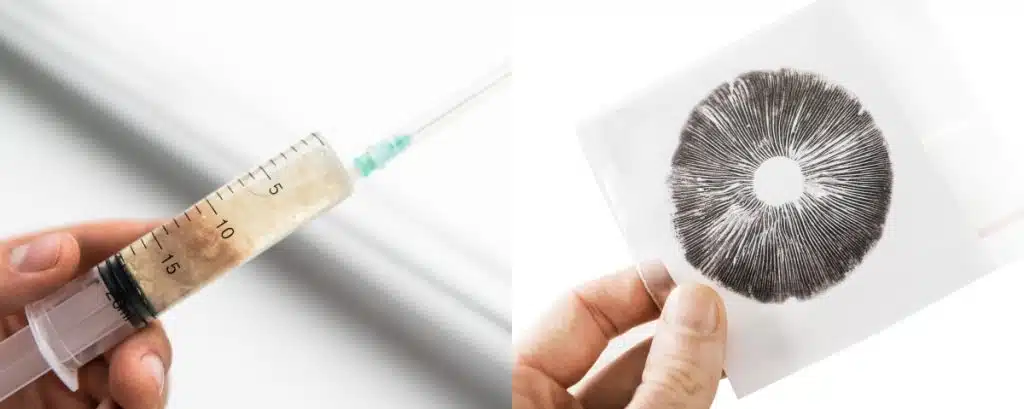If you’re planning on growing mushrooms at home, you have several options, and the techniques you choose will vary depending on what you hope to achieve.
In our opinion, an oyster mushroom growing kit is one of the best ways for beginners to start their mushroom-growing journey.
Once you have successfully grown and harvested mushrooms from a kit, you may want to move on to preparing and inoculating mushroom substrate.
We recommend purchasing high-quality grain spawn from a reputable supplier at this stage.
But if you’re an enthusiast who wants to experience the entire growing process, you may want to try making your own mushroom grain spawn.
When you reach this point, you’ll need to decide whether to use a spore syringe or liquid culture to inoculate your sterilized grain.
Is liquid culture the same as a spore syringe?
Liquid culture and spores syringes are not the same, although they may appear similar at first glance. One is a liquid filled with un-germinated spores, and the other is a liquid filled with living mushroom mycelium.
Read on to learn more about liquid culture and spores syringes with details on their advantages and disadvantages so you can decide which will work best for you.
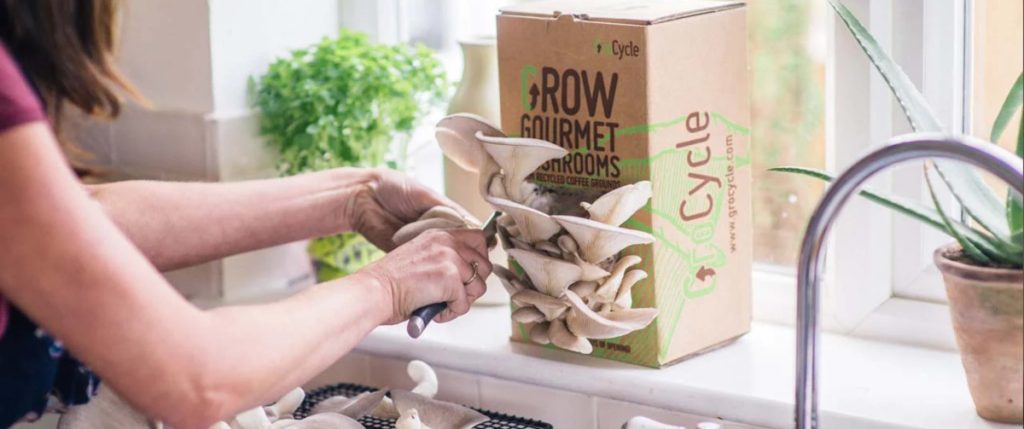
What is a Spore Syringe?
A spore syringe is a syringe, usually 10ml in size, containing mushroom spores in sterilized water.
Mushroom spores are single-celled reproductive structures that fungi produce and disperse to reach new food sources and continue growing.
Mushroom spores are tiny. You can only see individual spores under a microscope, but when thousands of spores are together, they’re visible as a fine powder.
These microscopic mushroom spores are much easier to store and transfer when they’re suspended in a liquid.
And a syringe makes it easier for mushroom growers to inject the spore-filled liquid into jars, bags or containers of sterilized substrate.
Once inside the damp, nutritious growing medium, two genetically matched spores must meet and germinate to produce mushroom mycelium.
You can buy spore syringes online, or if you have access to the species you hope to grow, you can make your own spore syringe from a mushroom spore print.
Our article on mushroom spore prints has more information and step-by-step instructions on how to make a spore print.
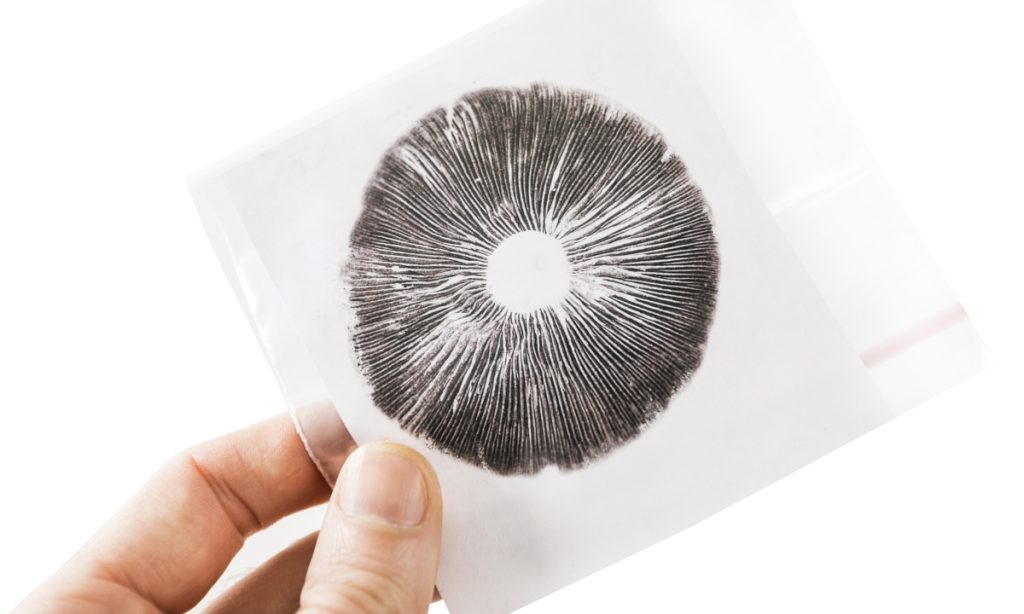
What is Liquid Culture?
Liquid culture, or LC for short, often comes in a syringe and consists of a sterilized nutrient-rich solution containing living mushroom mycelium.
Like a spore syringe, mushroom growers use liquid culture to store and transfer mushroom mycelium, but they can also use liquid culture to grow mycelium.
To make a liquid culture, you first need to create and sterilize a nutritious solution, and then, in sterile conditions, you need to inoculate the sterile solution using liquid or agar mushroom culture.
The next step is incubation. During this stage, the mushroom mycelium you have introduced will feed on the nutrients you have provided and grow.
One of the benefits of growing mushrooms with liquid culture is that it allows growers to clone specific strains, so they know what to expect in terms of colonization time, yield, fruiting body size, etc.
Can I inject a spore syringe into liquid culture?
You can use a spore syringe to inoculate a nutritious solution and grow mycelium, but when two spores meet and germinate, they create a new strain that differs from the parent fungus.
So you won’t know what you’re getting until you try to grow mushrooms using the culture.
Our complete guide to mushroom liquid culture has some easy-to-follow steps to help you make liquid culture and grow more of your favorite mushrooms.
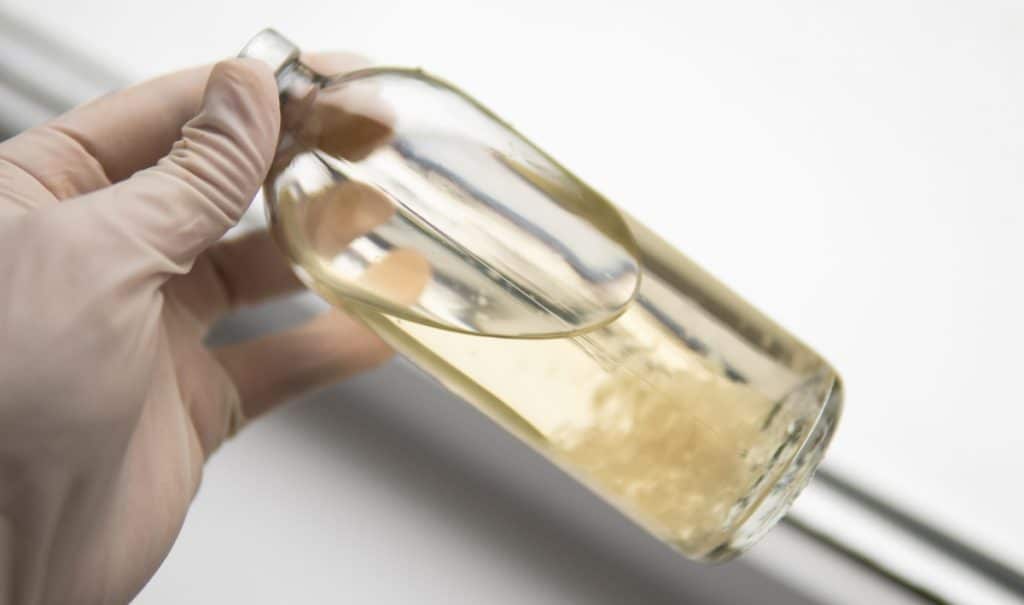
Mushroom Liquid Culture vs. a Spore Syringe
Although spore and liquid culture syringes may appear very similar, in many ways, they’re opposites, and often, an advantage of one is a disadvantage of the other.
In the points below, we look at some advantages and disadvantages of liquid culture and spore syringes to help you choose the one that best suits your needs.
Growth Rate
One of the advantages of liquid culture is the speed at which it colonizes the inoculated substrate.
The living mycelium in liquid culture begins to grow and colonize the substrate immediately after inoculation, and you can often see visible mycelial growth a couple of days later.
Colonization times vary depending on the mushroom species, environmental conditions and type of substrate.
But generally, the mycelium of well-known gourmet species takes one to three weeks to fully colonize a jar or bag of substrate.
Growth rate can be one of the disadvantages of spore syringes, as after you inject the spores into the nutritious substrate, they first need to germinate to create mycelium before colonization begins.
Germination times for mushroom spores vary significantly, and it can take anywhere from a couple of hours to several weeks, and environmental conditions play a significant role.
So, depending on the species you’re growing, it can take up to a month before you see visible mycelium colonizing the substrate.
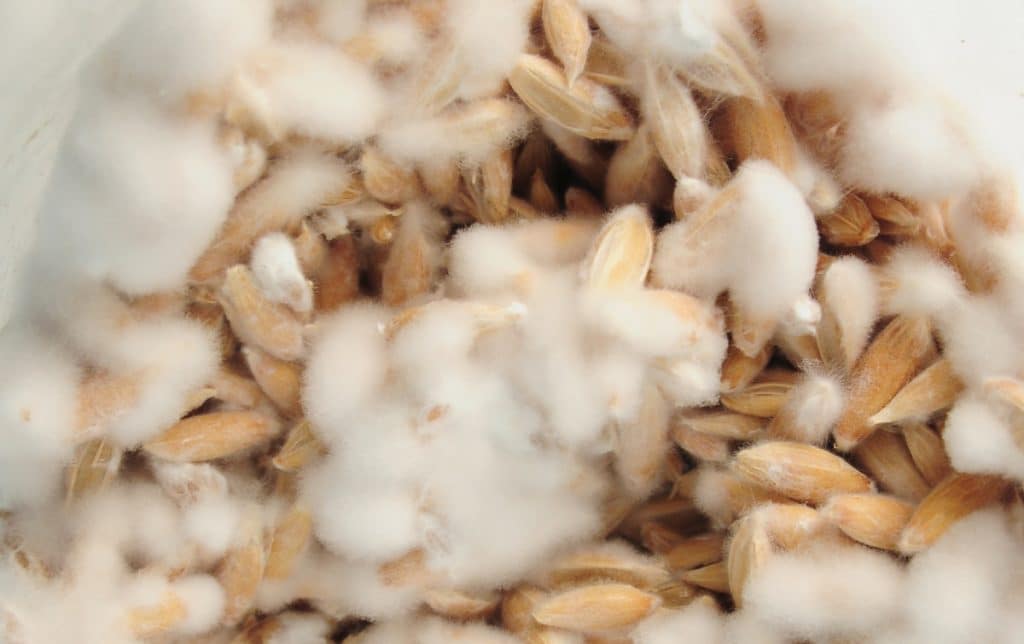
Genetic Diversity
Many growers feel that true liquid culture should only contain isolated mycelium of one strain, as this allows them to select the mushrooms they want to grow based on specific genetic traits.
You can get multispore liquid cultures made using a spore syringe. These cultures may contain several varieties and don’t offer the same advantages.
Commercial mushroom farmers usually use liquid culture containing isolated mycelium cloned from a proven mushroom variety, so they know what to expect.
Spore syringes provide the opportunity to grow new genetic individuals. These mushrooms will still be the same strain as the parent fungus but will have their own unique traits.
You’ll usually end up with more than one variety of mushrooms when you use a spore syringe, and some may be smaller or produce lower yields than others.
But at the same time, spore syringes provide opportunities to discover new, possibly even better, mushroom varieties with beneficial traits.
So, whether genetic diversity is an advantage or disadvantage of spore syringes depends on whether you’re growing mushrooms commercially for profit or experimenting to find the best variety possible.
Contamination Potential
Generally, when prepared correctly, both liquid culture and spore syringes should have low contamination rates.
However, contamination potential is one of the disadvantages of spore syringes.
You cannot sterilize spores as it would kill them, and depending on how and where you collected the spores, they may have mold or bacteria spores attached to them.
Slower colonization rates also increase the chances of contamination, and spore syringes usually take longer to colonize a substrate than liquid culture.
Liquid culture has lower contamination risks, especially if it’s made using contaminant-free agar culture, and the faster colonization rates also help to reduce the chances of contamination.
But, one of the disadvantages of liquid culture is that it’s challenging to spot contamination in the syringe as it looks very similar to the strands of mycelium.
You do not have this problem with a spore syringe. Spotting any contamination is easy.
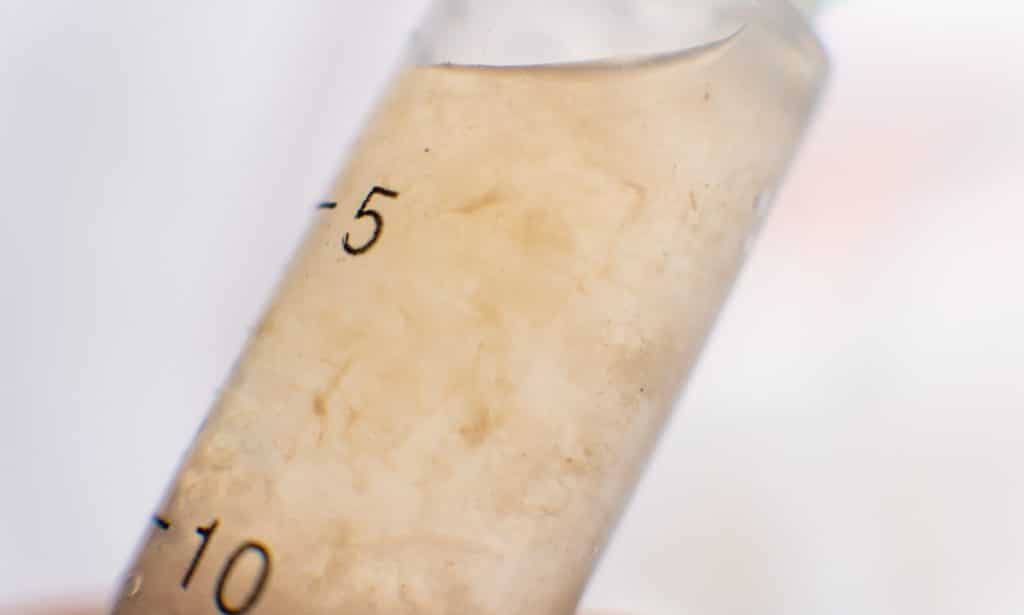
Yield Consistency
If you are after yield consistency, liquid culture made by cloning a proven strain is the way to go.
Yield consistency is one of the main advantages of liquid culture and the reason it’s so popular with mushroom farmers.
When you grow mushrooms using a spore syringe, you’ll usually end up with more than one variety in your substrate, and as their traits are unknown, it’s impossible to predict yields.
Price
Spore syringes have an upfront price advantage. They’re usually cheaper to buy than liquid culture, and making them is also cost-effective as you don’t need any expensive equipment.
But, in the long run, they may be less cost-effective as growing mushrooms with a spore syringe is unpredictable, and you may not get the desired yields.
Legality
For many people, legality is not a factor when deciding which method to use, but spore syringes are often used by people who want to grow prohibited psilocybin mushroom species.
In many jurisdictions, spore syringes containing spores of psilocybin-producing mushrooms are legal, while liquid culture containing psilocybe mycelium is not.
This is because spores do not contain any psilocybin until they germinate, and people can sell them online for microscopy use.
This means you can buy and sell the spores legally, but depending on your location, once you start growing psilocybe mushrooms, you would be breaking the law.
Shelf Life
A long shelf life is one of the advantages of spore syringes, and they can last 8 to 12 months when stored in the fridge.
You can even store them outside the fridge for around 6 months in an airtight container in a cool, dark spot.
A mushroom liquid culture won’t last long outside the fridge, and even when kept in the fridge, growers recommend using it within 6 months, although if stored correctly, it could last up to 12 months.
To prolong the life of liquid culture, store it in a sealed bag in the fridge, ideally at temperatures between 35 – 46°F (2 – 8°C). Be careful if your fridge is very cold. If you freeze your liquid culture, it will kill the mushroom mycelium.
Freezing spores is not a good idea either, as ice crystals can form and damage the spores’ cell walls, reducing the chances of germination after thawing.
Although spore syringes and liquid culture both have relatively long shelf lives, spore syringes are easier to store.

How to Use a Spore or Liquid Culture Syringe
Spore syringes are commonly used to inoculate jars or bags of grain to make grain spawn or BRF cakes for PF Tek.
Growers generally use liquid culture syringes to make more liquid culture or to inoculate sterilized grain to produce grain spawn.
Follow the easy steps below to use your spore or liquid culture syringe to inoculate grain:
Step 1: Prepare Your Workspace
The first step is to ensure you work in as clean an environment as possible.
Disinfect your work surface, the outside of your bags or jars of substrate and your hands, or use sterilized gloves.
To help prevent contamination, you should always inoculate your substrate in a clean, draft-free environment.
A still air box or glove box is ideal, and a laminar flow hood is even better, although most beginners won’t have laminar flow hoods.
Step 2: Prepare the Syringe
Remove the spore or culture syringe from the fridge and let it warm to room temperature.
If you purchased your spore or liquid culture syringes online, they should come sealed with a cap called a Luer lock and a sterile needle in a separate package.
To attach the needle to the syringe, hold the syringe with the Luer lock pointing upwards and unscrew the lock by turning it counterclockwise.
Remove the needle from its sterile package and attach it to the syringe, leaving the protective cap on.
Now, shake the syringe to distribute the spores or mycelium evenly throughout the solution, and you’re ready to inoculate your grain.
Step 3: Inoculate Your Substrate
Most jars or bags of substrate should have a hole or self-healing injection port that you can use to inject the spores or liquid culture onto the substrate.
Insert the needle into the jar or bag, making sure not to touch the substrate, and press the plunger slowly to release droplets from the end of the needle.
Spread these droplets over the surface of the substrate as each one is a potential mycelium growth point, and spreading them out helps to speed up colonization.
The amount of solution needed will vary depending on the quantity of substrate and the type of mushrooms you are growing, so it’s best to follow the manufacturer’s instructions.
If you have made your own spore syringes or liquid culture, you may need to research to find the ideal amount to use.
Generally, growers recommend using 1 to 2 ml of liquid culture and around 3 ml of spore solution per pound (453 grams) of grain.
Final Thoughts
Spore syringes are commonly used by mycologists, beginner mushroom growers and people who want to grow psilocybe mushrooms.
Most mushroom farmers prefer liquid culture containing mycelium cloned from a proven mushroom variety, as it’s more reliable and provides consistent results.
Liquid culture is ideal for general mushroom cultivation and best yields, but spore syringes add some mystery and allow you to hunt for the perfect mushroom.
Of course, when you find it, you’ll need to clone it to get more of the same mushroom.
To learn more about mushroom growing, visit our Mushroom Growing Hub or try one of our beginner-friendly mushroom cultivation courses.
